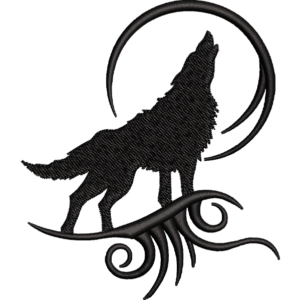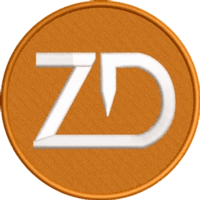The Importance of Underlay Stitches in Machine Embroidery Digitizing

Strong 8k brings an ultra-HD IPTV experience to your living room and your pocket.
Underlay stitches are the unsung heroes of embroidery. They form the foundation of a design, providing stability, structure, and a professional finish. In machine embroidery digitizing, understanding and using the right underlay stitches is crucial for achieving high-quality results. Whether you’re an embroidery enthusiast or a professional digitizer, mastering the art of underlay stitching can significantly elevate your work. This guide delves into the importance of underlay stitches, their types, and how digitizing services can help ensure precision in your embroidery projects.
What Are Underlay Stitches?
Underlay stitches are the first layer of stitching applied to the fabric before the top stitches are sewn. They create a stable base, minimize distortion, and enhance the overall appearance of the embroidery design.
Why Are Underlay Stitches Important in Machine Embroidery Digitizing?
1. Stabilization of Fabric
Embroidery often involves fabrics that stretch, shift, or distort under tension. Underlay stitches stabilize the fabric, preventing puckering and ensuring a smooth embroidery process.
2. Prevention of Design Distortion
Without proper underlay, the pull tension of top stitches can cause misalignment. Underlay stitching reduces this risk, maintaining the integrity of the design.
3. Enhancement of Design Quality
Underlay stitches lift the top stitches, giving them a fuller and more uniform appearance. This is especially important in bold or dense designs.
4. Improved Adhesion to the Fabric
Underlay stitches anchor the design to the fabric, ensuring durability even after multiple washes and regular use.
5. Concealment of Fabric Color
In lighter embroidery designs, underlay stitches help cover the fabric color, allowing the thread colors to stand out vividly.
Types of Underlay Stitches
1. Center Run Underlay
Usage: Best for small text or narrow elements.
Purpose: A single line of stitching runs through the center of the design element to stabilize it.
2. Edge Run Underlay
Usage: Ideal for medium-sized text and detailed designs.
Purpose: Stitches run along the edges of the design, preventing fraying and distortion.
3. Zigzag Underlay
Usage: Common in wide satin stitches.
Purpose: Provides better fabric coverage and helps in anchoring the top stitches.
4. Tatami or Fill Underlay
Usage: Used for large areas of fill stitches.
Purpose: Creates a dense foundation to prevent gaps and distortion.
5. Double Zigzag Underlay
Usage: Used in heavy or 3D embroidery designs.
Purpose: Adds extra stability and ensures the raised effect in the top stitching.
Factors to Consider When Adding Underlay Stitches
1. Fabric Type
Different fabrics require specific underlay techniques. For example:
Stretchy fabrics like jersey require a dense underlay for stabilization.
Stiff fabrics like denim need less stabilization but benefit from edge runs.
2. Stitch Type
Satin stitches, fill stitches, and running stitches each require tailored underlay patterns for optimal results.
3. Design Size and Complexity
Larger or more intricate designs benefit from multiple layers of underlay to ensure structural integrity.
4. Thread and Needle Selection
The type and thickness of thread and needle used can affect the performance of underlay stitches.
How to Add Underlay Stitches in Machine Embroidery Digitizing
1. Use Professional Digitizing Software
Software like Wilcom, Hatch, or Brother PE-Design allows you to customize underlay settings for your design.
2. Choose the Right Underlay Type
Evaluate your design and fabric to determine the most suitable underlay stitch.
3. Adjust Stitch Density and Length
Ensure the density and length of underlay stitches align with the fabric type and design requirements.
4. Test the Design
Run a test stitch on scrap fabric to check the performance of the underlay stitches and make adjustments as needed.
5. Consult Digitizing Services
If you’re unsure, professional digitizing services can handle the intricacies of underlay stitching for you, ensuring precision and quality.
Common Mistakes in Using Underlay Stitches
1. Overuse of Underlay
Too many underlay stitches can make the design bulky and difficult to sew.
2. Skipping Underlay
Some digitizers skip underlay stitches to save time, resulting in poor design quality and durability.
3. Incorrect Stitch Type
Using the wrong underlay stitch can lead to ineffective stabilization or visible underlay.
4. Poor Alignment
Misaligned underlay stitches can cause uneven top stitching and an unprofessional finish.
Benefits of Professional Digitizing Services for Underlay Stitches
Outsourcing to expert digitizing services ensures:
Accurate placement of underlay stitches.
Optimization for specific fabrics and designs.
Time savings and reduced trial-and-error.
Professional-quality embroidery results.
Applications of Proper Underlay Stitches in Machine Embroidery
1. Commercial Branding
Logos and promotional items demand sharp, consistent designs supported by proper underlay.
2. Personalized Gifts
Names and monograms on towels, bags, and garments benefit from enhanced quality through underlay stitches.
3. Fashion Industry
Complex patterns on delicate fabrics require meticulous underlay work to prevent distortion.
4. Home Decor
Pillows, curtains, and table linens achieve a polished, long-lasting look with underlay support.
Conclusion
Underlay stitches are an integral part of machine embroidery digitizing, providing the foundation for high-quality and durable designs. By understanding the types of underlay stitches and their applications, you can create embroidery that stands out in both appearance and longevity. If you’re looking to save time and ensure professional results, expert digitizing services can handle the intricacies of underlay stitching, allowing you to focus on bringing your creative visions to life.
FAQs About Underlay Stitches in Machine Embroidery Digitizing
1. What happens if I skip underlay stitches?
Skipping underlay can lead to puckering, distortion, and uneven top stitches, compromising the design's quality.
2. Can I add underlay stitches manually?
Yes, but using digitizing software or professional digitizing services ensures precision and efficiency.
3. How do I know which underlay stitch to use?
The choice depends on the fabric type, design size, and the type of top stitches used.
4. Are underlay stitches visible in the final design?
No, underlay stitches are covered by top stitches if done correctly.
5. Do all embroidery designs require underlay stitches?
Most designs benefit from underlay, but small or simple designs may not require it.
6. Can underlay stitches prevent thread breakage?
Yes, by stabilizing the fabric and reducing tension, underlay stitches can minimize thread breakage.
7. Is underlay stitching necessary for all fabrics?
Stretchy and thin fabrics especially require underlay, while stiffer fabrics may need less.
8. How can I optimize underlay for 3D embroidery?
Use dense zigzag or double zigzag underlay to create a raised foundation for 3D designs.
9. What tools do professionals use for underlay stitching?
Professional digitizers use software like Wilcom, Hatch, and Pulse for precise underlay customization.
10. How do digitizing services improve underlay stitching?
Digitizing services optimize underlay settings based on fabric type, design complexity, and machine specifications.
Note: IndiBlogHub features both user-submitted and editorial content. We do not verify third-party contributions. Read our Disclaimer and Privacy Policyfor details.




